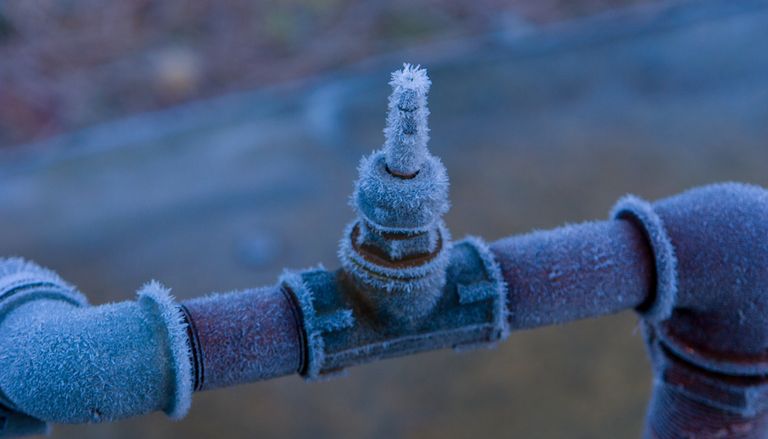Important Tips for Preventing Frozen Plumbing in Winter Conditions
Important Tips for Preventing Frozen Plumbing in Winter Conditions
Blog Article
The article down the page in relation to 6 Ways to Prevent Frozen Pipes is especially insightful. Have a go and make your own personal assumptions.

Winter can ruin your pipes, specifically by freezing pipelines. Right here's exactly how to prevent it from happening and what to do if it does.
Intro
As temperature levels decrease, the risk of frozen pipelines boosts, potentially resulting in costly fixings and water damage. Understanding just how to avoid frozen pipelines is important for property owners in cool climates.
Avoidance Tips
Protecting vulnerable pipelines
Cover pipes in insulation sleeves or use warmth tape to safeguard them from freezing temperature levels. Focus on pipes in unheated or external areas of the home.
Heating strategies
Maintain interior areas effectively warmed, especially areas with pipes. Open up closet doors to allow warm air to flow around pipelines under sinks.
Just how to identify frozen pipes
Try to find decreased water flow from taps, uncommon smells or sounds from pipelines, and noticeable frost on revealed pipelines.
Long-Term Solutions
Architectural modifications
Take into consideration rerouting pipelines far from outside wall surfaces or unheated areas. Add extra insulation to attics, cellars, and crawl spaces.
Updating insulation
Purchase top notch insulation for pipes, attics, and walls. Correct insulation assists preserve consistent temperature levels and minimizes the risk of frozen pipes.
Safeguarding Outdoor Plumbing
Garden hose pipes and outdoor faucets
Disconnect and drain pipes yard pipes before wintertime. Mount frost-proof spigots or cover outdoor taps with shielded caps.
Comprehending Frozen Pipelines
What creates pipes to freeze?
Pipelines freeze when exposed to temperature levels below 32 ° F (0 ° C) for extended durations. As water inside the pipes ices up, it broadens, taxing the pipe wall surfaces and potentially causing them to break.
Dangers and problems
Frozen pipelines can result in water supply disruptions, building damages, and costly repairs. Burst pipelines can flood homes and trigger considerable structural damage.
Indications of Frozen Piping
Identifying frozen pipelines early can prevent them from rupturing.
What to Do If Your Pipes Freeze
Immediate actions to take
If you think frozen pipes, keep faucets available to eliminate stress as the ice thaws. Make use of a hairdryer or towels taken in warm water to thaw pipelines gradually.
Verdict
Protecting against icy pipelines needs positive procedures and quick reactions. By understanding the reasons, indicators, and safety nets, home owners can secure their plumbing during winter.
5 Ways to Prevent Frozen Pipes
Drain Outdoor Faucets and Disconnect Hoses
First, close the shut-off valve that controls the flow of water in the pipe to your outdoor faucet. Then, head outside to disconnect and drain your hose and open the outdoor faucet to allow the water to completely drain out of the line. Turn off the faucet when done. Finally, head back to the shut-off valve and drain the remaining water inside the pipe into a bucket or container. Additionally, if you have a home irrigation system, you should consider hiring an expert to clear the system of water each year.
Insulate Pipes
One of the best and most cost-effective methods for preventing frozen water pipes is to wrap your pipes with insulation. This is especially important for areas in your home that aren’t exposed to heat, such as an attic. We suggest using foam sleeves, which can typically be found at your local hardware store.
Keep Heat Running at 65
Your pipes are located inside your walls, and the temperature there is much colder than the rest of the house. To prevent your pipes from freezing, The Insurance Information Institute suggests that you keep your home heated to at least 65 degrees, even when traveling. You may want to invest in smart devices that can keep an eye on the temperature in your home while you’re away.
Leave Water Dripping
Moving water — even a small trickle — can prevent ice from forming inside your pipes. When freezing temps are imminent, start a drip of water from all faucets that serve exposed pipes. Leaving a few faucets running will also help relieve pressure inside the pipes and help prevent a rupture if the water inside freezes.
Open Cupboard Doors
Warm your kitchen and bathroom pipes by opening cupboards and vanities. You should also leave your interior doors ajar to help warm air circulate evenly throughout your home.

Do you appreciate reading up on How to prepare your home plumbing for winter weather? Leave a remark down below. We would be pleased to see your reactions about this blog entry. Hoping that you come back again in the near future. Do you know someone else who is excited about Winter Plumbing Precautions: Preventing Frozen Pipes? Feel free to promote it. We treasure your readership.
Click Here Report this page